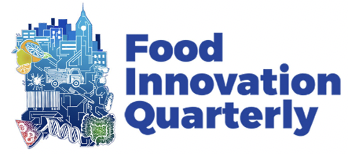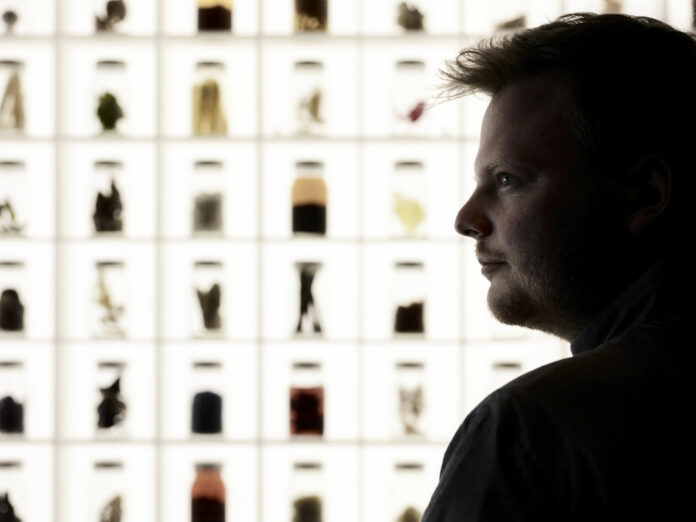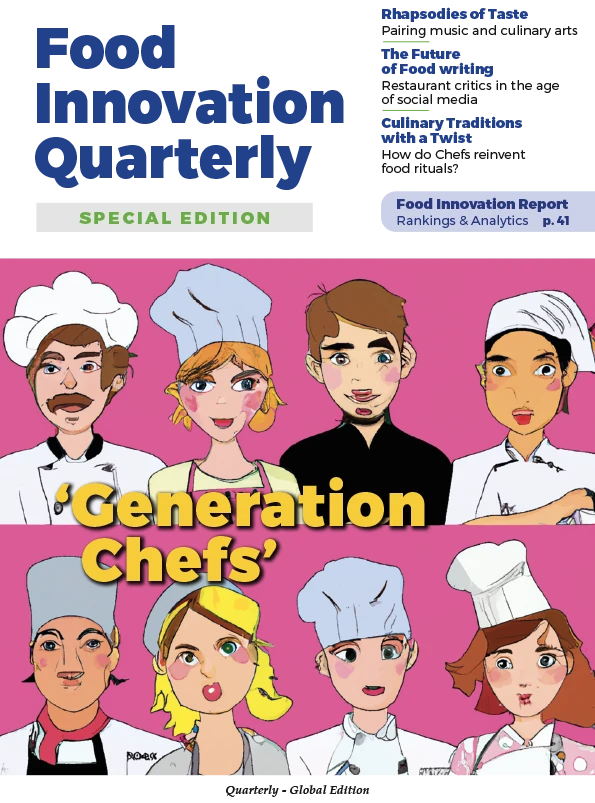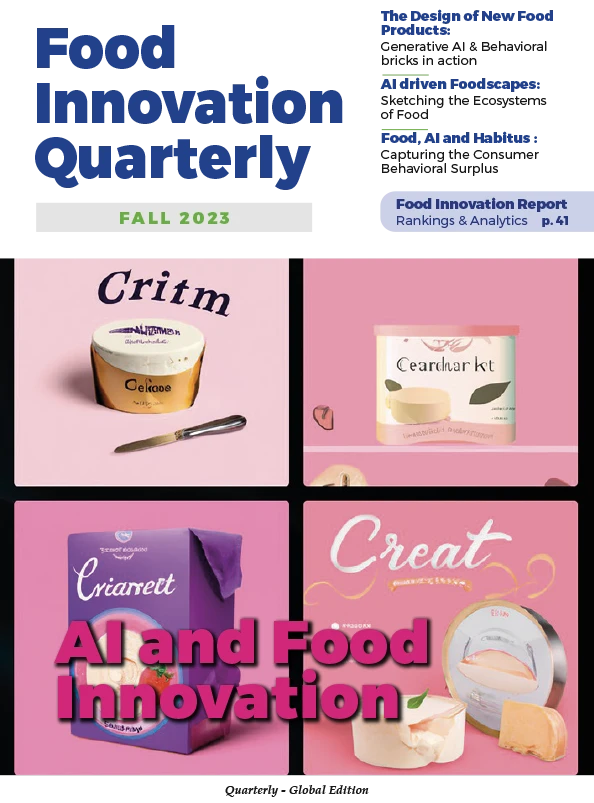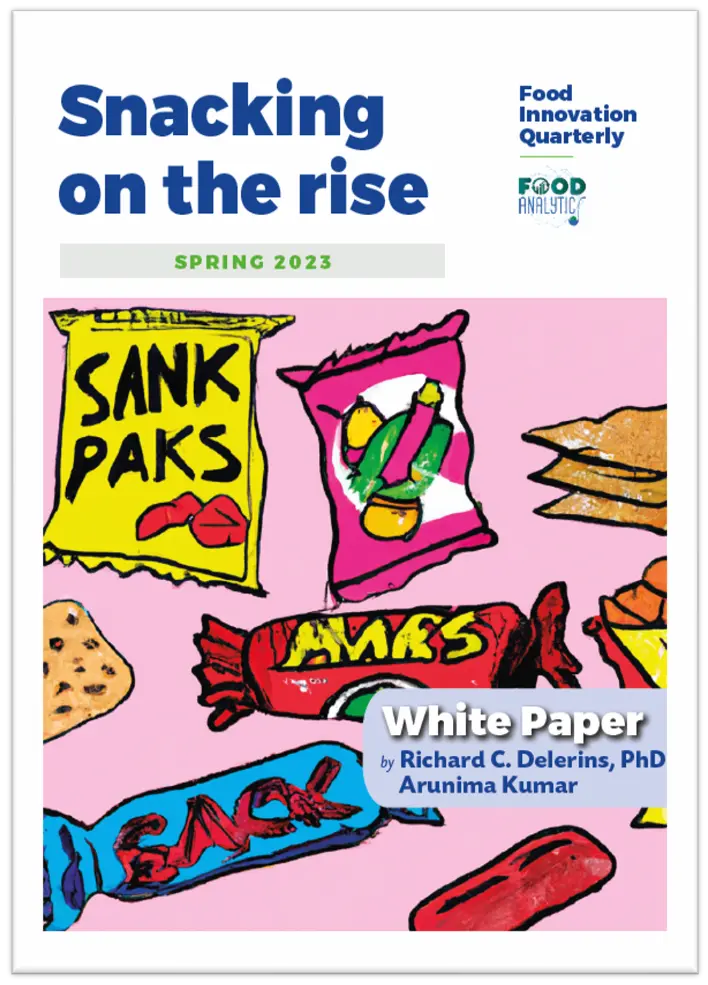Rasmus Munk and his “Holistic Cuisine” may just be as innovative as things get in the gastronomic realm.
Alchemist, his Copenhagen restaurant, is the high-tech, high-concept vessel for what some have called the most ambitious and creative kitchen in the world, using art, science and culinary skill to deliver an immersive, 50-course dining journey spread across five separate spaces in a converted warehouse.
I sat down with Rasmus for a discussion about his ideas and creative process, and toured Alchemist with Lena, one of his team.
The impetus behind his elaborately staged dining experience probably lies in the deeply responsible social conscience embedded in the Danish psyche. Rasmus—part chef, part provocateur—is driven to generate awareness and stimulate discussion of the uncomfortable, often-avoided social issues that he sees out in the world, topics that are sometimes under the radar of his well-heeled guests. The dishes he serves are at the heart of the experience – the core idea is to invite his guests to “eat the message”.
Cuisine as “public debate”
Each course at Alchemist is designed to carry a message, some obvious, others subtle and open to interpretation. Guests discover meaning in the dishes they are served through introductory narratives from their waiters and their own eating experiences, enhanced by multimedia art, and a few mind-opening participatory activities. Rasmus inserts himself into the conversation from time to time.
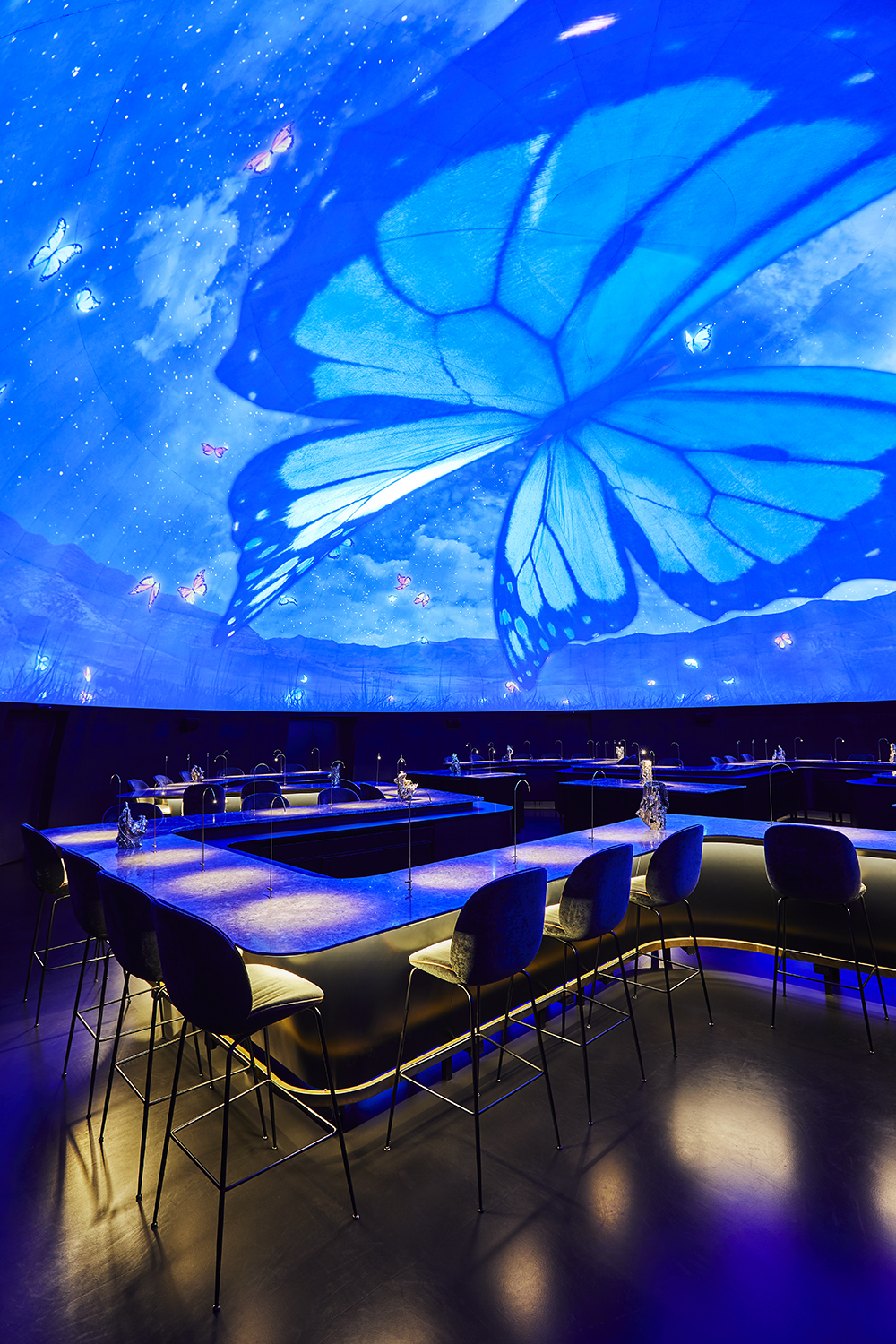
Alchemist serves as a well-orchestrated adventure in gastronomy-enhanced advocacy tailored to the Michelin set, but Rasmus also creates other, more direct ways to address the issues he champions. In 2020, during the Covid shutdown, Rasmus founded JunkFood in the kitchen at Alchemist to provide free, warm meals to the unhoused population in Copenhagen. Today it has its own facility, a professional management team, and official status as an NGO.
From a culinary standpoint, Rasmus grew up during the rise of New Nordic Cuisine, which felt constraining, not just because of its practical limitations, but also because it didn’t provide the creative platform he desired, one that taps into both his culinary conceptualizations and his flair for dramatically expressive storytelling.
His solution was to design and build, from the ground up, an immersive venue to combine these two talents, to form a team of artists and creatives, culinary researchers and developers, and to create a guided tour through his thought-provoking dining journey. Unlike some chefs who draw their ideas from the ingredients and sensory cues from the natural world, Rasmus finds inspiration in the dynamic, often turbulent environment of public discourse, commercial messages, and the whirlpool of information and disinformation we all ingest.
Like any chef, he has his own areas of expertise that find their way into his signature dishes: animal organ meats, freshly churned butter, and a wide range of umami-rich ingredients. While he enjoys the sharp, acidic flavors and fermentation techniques of Nordic cuisine, Rasmus says he brings a “richer, more generous aspect” to many of his dishes, defying any easy culinary labels or categories.
Design the experience and spark a new conversation
Inside and outside the kitchen, Rasmus orchestrates every aspect of the Alchemist experience, meticulously focused on the details as his team transforms his ideas into dishes, images and sounds. During our interview, he was soft-spoken and thoughtful, letting our discussion of his process unfold in a natural, free-flowing way—breaking many of the stereotypes of both the “celebrity chef” and the “artist provocateur” worlds.
Rasmus relies on a highly visual approach to conceptualizing and communicating. He drew up the entire plan for the layout of Alchemist for his first meeting with investors, and it’s turned out exactly as he sketched it. Lena notes, “He sees everything in pictures. If you want his attention, you need to send him a picture. Never mind with email attachments and stuff like that.”
When asked what makes his approach to cooking unique, Rasmus frames it this way: “A lot of chefs design their menus by the seasonality of certain ingredients when they’re at their peak flavors, and then create dishes that really bring out those tastes and textures” but he says when he chooses ingredients, he is “probably a little bit more like a painter—you want to do something with the picture, and select which colors to use to get the depth and aesthetic to help it convey the message. Of course, don’t forget the other parts of the craft that are needed, like a skilled cook to put it all together and still make it delicious.”
To make this whole system work, Alchemist has its own test kitchen in the restaurant, where a small team of chefs with expertise in disparate fields like food science, 3D printing and laser cutting bring Rasmus’ ideas to life. When Rasmus briefs the Alchemist team about a new dish to convey one of his thematic messages, he uses pictures and sketches more than words—sometimes with very tight, refined direction, and other times in a more abstract way, to give them space to ideate and translate an abstract topic into a new dish.
He also runs a separate R&D center running long-term projects in food chemistry and technology, often with partners in academia or industry. Lena mentions “a seven-year project to use silk from silkworms as an edible protein source, a collaboration with MIT to develop zero-gravity culinary techniques, and our ongoing project with UC Berkeley in the use of fungi to potentiate certain flavors.”
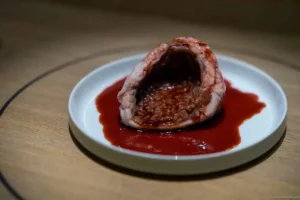
Some of his favorite examples of visually striking, intensely provocative dishes include one that makes a statement about the global hunger problem and rethinking our food system to alleviate it. Perhaps one of his most challenging ideas, it’s based on an advertisement for hunger relief donations and featured a starving boy. The Alchemist engineers 3D-printed a child’s rib cage and cast it in silver, then the chefs would layer on thin slices of meat for the diner to peel off, exposing the bare “skeleton” while consuming its skin and flesh.
Not all his dishes lean so heavily into shock value. In the first couple of courses, the dishes tend to be more playful but rely heavily on familiar flavors and food ideas. Lena says, “We have our version of the bikini sandwich, for example, which is a little ball made out of mochi dough. And inside, you find the stringy cheese and ham filling when you pull it apart. And it’s super crispy, sweet, umami, everything at the same time.”
She continues, “In those early courses, the dishes are super comforting yet give you something surprising as well. That means we can amp up the drama as the meal continues because they trust us.” Once their trust is won, guests become more open to trying more unusual dishes and engaging with the messages they convey. “It’s all about finding a balance and meeting the guests on the on the right level, and getting them talking.”
Beyond “New Nordic Cuisine”
Rasmus grew up in the world of New Nordic Cuisine but he knew early on that he had his own contributions to make: “It’s been a part of me, like when I was in culinary school, noma was the number one restaurant in the world. And so, it’s just been a natural thing for me to have that as a part of my cooking. Without trying to sound arrogant, New Nordic Cuisine is quite uncomplicated in a way, it’s been discovering our region and using ingredients that make sense to use here. And suddenly, we had an alphabet of ingredients that we didn’t have before. That’s, of course, hard not to like, hard not to embrace. And for me, this was one of the things we manifested in the first edition of Holistic Cuisine. But at the same time, we felt like the layers we put on top of it were something that didn’t really have any labels, and it’s maybe a new extension of the alphabet as well.”
Part of that new alphabet is reflected in Rasmus’ choice of ingredients he uses to convey his stories. Lena says, “He’s an adventurous eater, probably more than most of his guests. He’s eaten raw cow udders, tropical larvae, all kinds of things. But he’s a classically trained chef, more in the French tradition than New Nordic, so he insists on making these dishes taste delicious, even while using some startling ingredients. For example, we serve this ice cream dessert made from pig’s blood, which acts as an emulsifier instead of egg yolks, and also imparts a recognizable blood flavor. It tastes great, but people have a visceral reaction to the blood flavor at first. Then they see that the message encourages blood donation, and it makes sense, and people enjoy the uniqueness and authenticity of it.”
Rasmus leans heavily into richness, umami and sweetness in his cooking. Jamón Ibérico is one of his favorite ingredients, a stark departure from New Nordic, and he takes care not to overcomplicate it in his recipes to allow its richness to shine. He also uses texture to create a deeper, more complex experience, often selected from the animal kingdom: liver, brain, chicken feet, jellyfish, even pig’s windpipe.
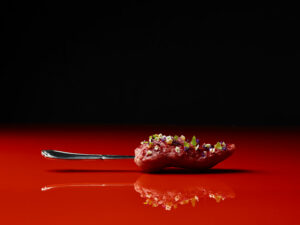
For him, these serve multiple purposes: besides their unique textures, they play a role in the dish’s story, and they draw attention to parts of meat that are usually discarded but are perfectly edible. “Here in Denmark, there are more pigs than human beings, and we export over 90% of that. Maybe we need to get back to a way of meat consumption that respects the whole animal. Back in the middle 1900s we ate cow udders, but nobody in Denmark would do that today.” A big challenge is to convince suppliers to preserve and sell these parts that they would otherwise scrap, since supply typically follows demand.
Rasmus concludes, “I hope the future of Holistic Cuisine is about adding more dimensions. I think the fine dining restaurants of the future will need to give more storytelling and add more dimensions, the way we have started here.”
Spora
Last November, Rasmus unveiled his latest venture: Spora, a research and innovation center focused on creative new ways to leverage the gastronomic and scientific expertise of Alchemist to create scalable new food technologies. Funded by bioscience partners Claus and Bente Christiansen, Spora is seeking collaborations with food industry leaders to bring novel ingredients and technologies into the mainstream, and to help move the industry toward a more sustainable food system.
Spora will initially focus on two main areas: upcycling food industry sidestreams, and diversifying protein sources. Current projects and partnerships include the ongoing UC Berkeley fungus project mentioned earlier, plus protein derived from spent rapeseed, new meat and seafood alternatives made from seaweed and fungus, and a partnership with San Francisco-based Wildtype on cultivated seafood.
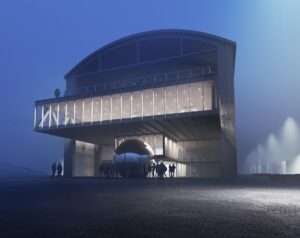
The multidisciplinary team will include industry leaders from gastronomy, science, design, art, engineering and business. Located at Refshaleøen in Copenhagen, it features a state-of-the-art facility spanning 1,000 square meters, with purpose-built research kitchens, cutting-edge microbiology labs, and a fully equipped 3D design and sound studio.
Rasmus said last September, “The Spora venture will allow us to pursue our wildest dreams within scientific and gastronomic research—from designing soundscapes for the restaurant to using ultrasound to extract flavors. We will investigate the potential of 3D-printing food, analyze sensory experiences, and explore the impact of the latest gastro-technology. During the last couple of years, we have been working intensely on developing the vision and business plan for Spora, and I can’t wait to start using my craft and ambition to make a broader impact in the world.”
